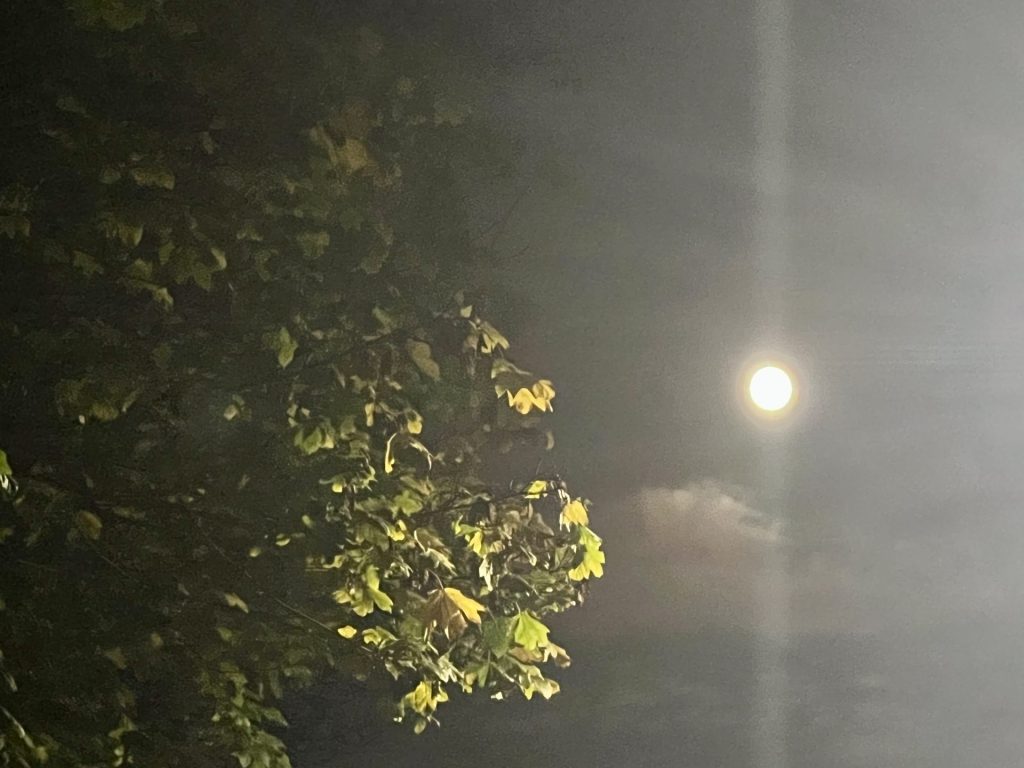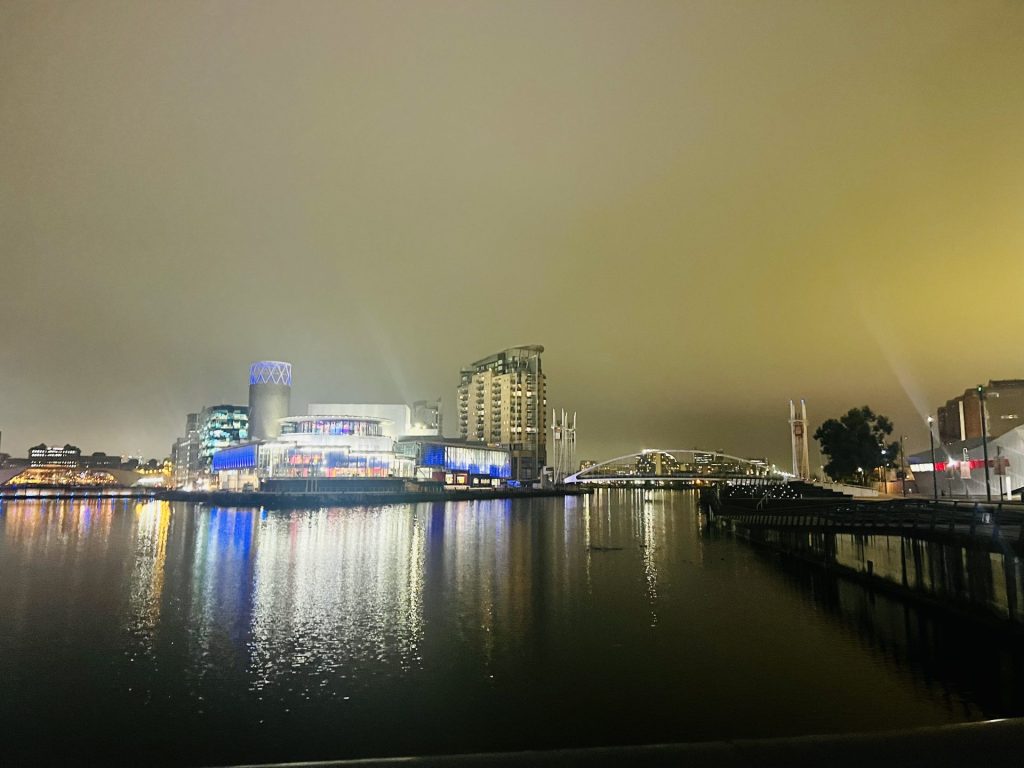Award-winning nature writer Anita Sethi walks along the Manchester Ship Canal at dawn and after dusk, the birds, dark water, bright artworks and busy history all helping her live through pain and shock
By Anita Sethi
It’s sunrise at Salford Quays.
I’m walking by the waterways and looking out for sandmartins, swifts and sandpipers, which all have made a home here at one time or another. Other winged inhabitants of the area include peregrines which have been spotted on the tall towers. I walk on and see a flock of gulls; my heart leaps as a few of them spread their wings and soar towards the sunrise.
I’ve been wishing for waterways.
I’m hungry to hear the swell and crash of water, to feel freed by the fluidity of it, to walk by waters. I’ve long loved walking by waterways. And after a serious accident shattered my right arm – my writing limb, the limb which is my livelihood – leaving me unable to fully supinate (that’s turn the palm skywards) as well as other loss of movement meaning it hurts to write, I’ve turned to hydrotherapy to help me cope.
I’ve found that both walking by water and being immersed in it have helped to relieve at least some of the distress of the experience, to bring some sense of calm and peace of mind whilst gazing out at the waters. Swimming through this part of Salford Quays is out of bounds though, as a sign warns: ‘DANGER. Deep Water. No Swimming’.
Instead, I walk by the waters. Since my accident I’ve had to slow down, but instead of being frustrated by my new pace, I’m trying to feel the virtues of slower ways of life. Including walking slow ways.
I’ve walked here from Old Trafford passing not far from Trafford Park, the world’s first industrial estate and the largest in Europe, blocking out the blare of traffic en route by listening to music. The first glimpse of water was at Pomona, and on I walked until reaching Imperial War Museum which houses over 2,000 objects telling the stories of over a century of war.
I walk further along the Manchester Ship Canal and watch the sun rise, rendering the dark black waters a more steely grey, slowly unveiling the daylight world. A sign advertises a heritage sculpture trail, Where the Wild Things Were, allowing walkers to discover the hidden history of The Quays. Further along I see Erie’s Rest by Ingrid Hu: “The shape of this sculpture echoes the ebb and flow of the Ship Canal.” The sign explains how cargoes of bananas and rum from Jamaica, grain from Canada and Texas, and timber from the Baltic states all came down this busy waterway.
The Manchester Ship Canal has a fascinating history, and as I watch the waters I feel the ebb and flow of time – once upon a time dockers would be here from the break of dawn unloading cargo from ships, loading it onto rail wagons waiting along the docks and transporting the goods to the mills, factories and warehouses in Manchester and beyond.
I take to walking here at sunset too and through the night, and love it after the sun goes down, being engulfed in darkness, a sense of escaping my self and the throbbing pain in my right hand, wrist and arm. I walk and watch the world. I walk and watch the lights of MediaCity, BBC and ITV studios in the distance, and The Lowry, named after the painter LS Lowry renowned for his foggy cityscapes. Along another bridge not far from The Lowry, I can see the neon red Manchester United stadium sign illuminated in the distance.
I walk by the waters, now jet black, and look up to see the moon beaming through tree branches; these last leaves of autumn clinging on are so poignant for the winter chill is deepening by the day. Further on past the trees and I see it is a full moon tonight, so haunting, and reflected in the waters below, glittering the waters.


After a bout of bronchitis, I stop walking much for a while and when I start again, the Lightwaves 2022 festival has started, a free outdoor light festival produced by Quays Culture. Installations include Navvies by Matthew Rossier, a new audio-visual installation exploring the role of the workers who built the Manchester Ship Canal. I also enjoy Once We Were Water by idon’tloveyouanymore, walking through a digitally recreated river projected onto a bridge which reacts to the movement of people. Then there is Our Beating Heart by Studio Vertigo, a heart-shaped installation of dancing lights.
This year after my accident has almost threatened to engulf me with darkness and pain, almost like a ghost in my own life, but walking by the waters, I’m reminded of phosphorescence, that which keeps shining against the odds. Walking slowly through the darkness and the light I feel my heart there, still beating.

Anita Sethi
Anita Sethi is an award-winning nature and travel writer born in Manchester, UK. She is author of I Belong Here: a Journey Along the Backbone of Britain and is also published in several anthologies including Women on Nature, The Wild Isles and Seaside Special: Postcards From the Edge. She has written for the Guardian, Observer, Sunday Times, BBC Wildlife, and Vogue among others and loves walking.